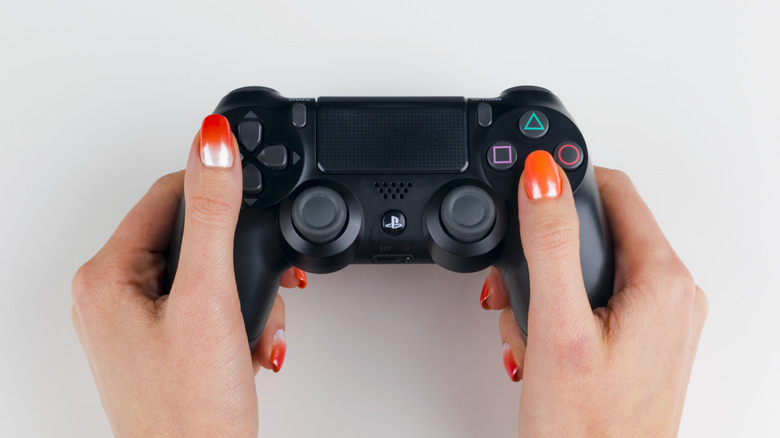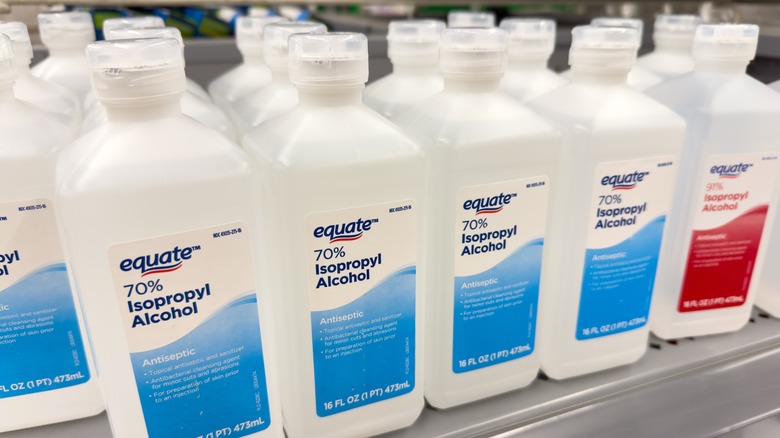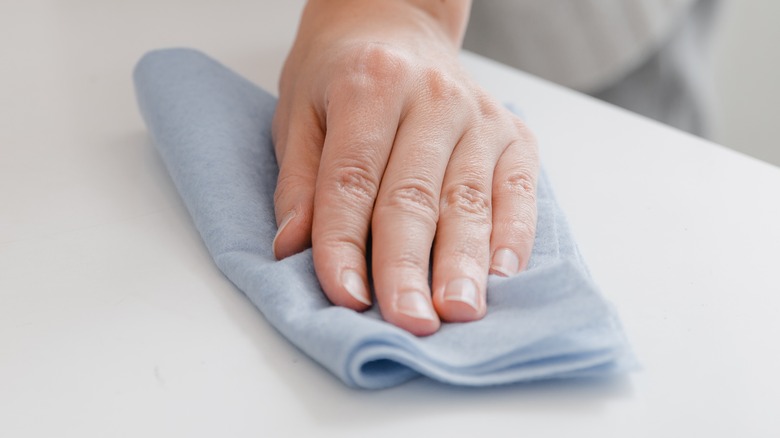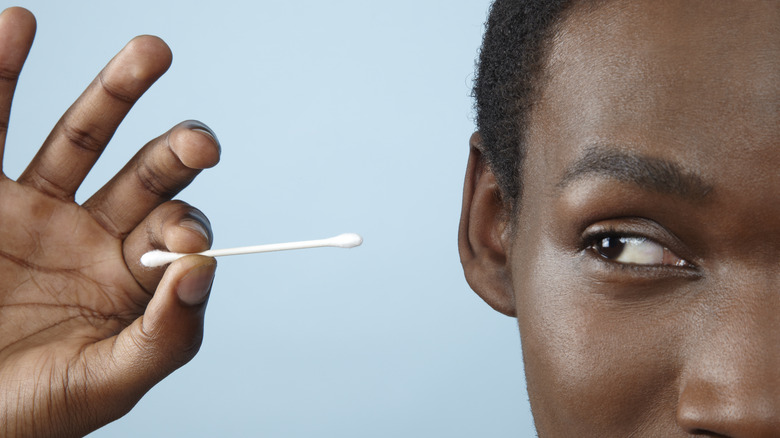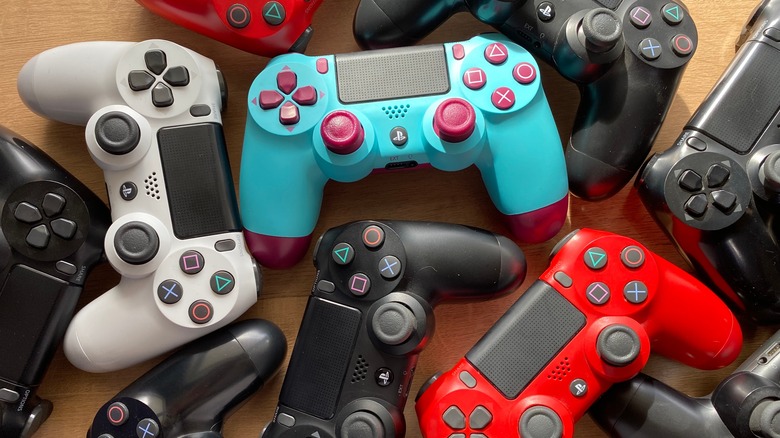How To Safely Clean Your PlayStation 4 DualShock Controllers
Whether you're still using a PlayStation 4 from years back, recently got a hold of a new or refurbished one, prefer to use a PS4 with your PS5 to play PS4 games, or are familiar with any video game controllers, you're probably familiar with the inevitability of gunk. Controllers have a tendency to accrue dirt and grime over the weeks, months, and years because we're always touching them — and our hands are great at naturally producing oils even under the most sterile of conditions.
PlayStation 4 controllers are no exception, no matter what hardware you use them with. Spend enough time with one and it's going to get dirty. At best it'll look unpleasant, but too much dirt on a controller can also affect its functionality as buttons get stuck or debris finds its way inside the housing.
Once that starts to happen (or, ideally, before), the simplest course of action is to give the controller a good, electronics-safe scouring. Fortunately, PS4 controllers aren't particularly difficult to clean when you have the right supplies. It's not all that different from cleaning a PS5 controller, but as always, patience and a bit of caution is recommended.
What you'll need
Chances are you already have most (if not all) of what you need for a thorough controller cleaning on-hand, but it's recommended that you look through this checklist before you begin.
- Some isopropyl alcohol (a.k.a. rubbing alcohol), preferably in a plastic spray bottle, rated at around 90 to 100%.
- A clean microfiber cloth — any size will do — but a smaller cloth will likely be easier to work with. You can substitute a paper towel or other soft cleaning cloth if you don't have a microfiber one handy.
- Keep a second clean towel or cloth nearby as well.
- Gloves made from either latex or nylon, to avoid getting alcohol on your hands.
- A handful of cotton swabs (make sure these are also clean).
- A few unused toothpicks.
- A clean surface to work on.
- The PS4 controller you want to clean.
- Keep a napkin or paper towel off to the side that you can place your used supplies on, to avoid getting any of that controller grime on the surface you're working on.
Please note that, once you've finished cleaning the controller in its entirety, you should not plug it in or start using it right away. Isopropyl alcohol does evaporate fairly quickly, but we're dealing with delicate electronics here. It's best to leave the controller alone to dry five to 10 minutes before you reconnect any cables or attempt to use it again, just to be safe.
Cleaning the bulk of the controller
Before you get started, it's important that you unplug and turn off the controller and turn off and unplug the PS4 console itself. That way you won't accidentally turn either device on during the cleaning process.
- Press and hold the PlayStation button in the center of the controller for around 15 seconds to turn it off.
- Turn off the console by pressing and holding the Power button at the front until you hear it beep two times. Unplug it once it powers down fully.
- Spray some isopropyl alcohol onto the cleaning cloth. If you don't have a spray bottle, pour a little bit onto the cloth instead. Do not spray or pour alcohol on the controller directly as too much liquid could seep inside the casing and damage the electronics.
- Gently and thoroughly wipe down the surface of the controller with the cleaning cloth. If you begin to notice a buildup of dirt on the cloth, re-apply alcohol to another clean part of it or flip the cloth over.
- If there's still a noticeable amount of dirt on the controller's surface after one pass, repeat the process with a fresh section of the cleaning cloth (or a completely fresh cloth if you have one).
- Use the other cloth or paper towel (which should be clean and dry) to dry off the controller's surface once you've finished going over it with isopropyl alcohol.
Now is time to move on to the more intricate areas and crevices.
Getting to the delicate bits
The PS4's controller is also full of little nooks and crannies around its seams and the buttons. These areas require a more precise approach.
- Dip a cotton swab into the isopropyl alcohol, then squeeze the end to compact the cotton and wring out excess liquid (be sure you're wearing gloves when you do this!).
- Press and move the swab around the edges of the face buttons, Option and Share buttons, edges of the Touchpad, digital control pad, and the trigger buttons one section at a time, repeating as necessary with a fresh swab.
- For the thumb sticks, prep a clean swab the same way and clean around the tops of the sticks first.
- Continue to swab along the sides or stems of the sticks. You'll also want to move and hold the sticks in different directions as you clean in order to be able to reach different parts of the base.
- Using another swab with alcohol, gently press and rub along the ports on the top of bottom of the controller.
- Using a clean toothpick (and changing to a fresh one as needed), gently push into and drag along the controller's various seams. Between the trigger buttons, around the edge of the Touchpad, inside the individual holes on the front for the controller speaker, and the seam that connects the controller's shell pieces together.
If you notice any leftover dirt that's been loosened but hasn't come off yet, give the controller another wipedown (and subsequent drying off) like in the previous section. Otherwise use a clean cloth to dry off the controller surface.
How to keep it clean
There's no way to permanently prevent your controller from getting dirty again in the future, but there are a few things you can do to increase the amount of time between inevitable cleanings:
- Before you start using the controller, give your hands a thorough washing to prevent accumulated (and often naturally-occurring) oils and other grime from building up. If you're playing for a long time, take the occasional break to re-wash your hands.
- Don't eat or drink while using the controller as the food debris will likely end up on it. Also avoid keeping the controller in an area where it might encounter food or drinks by accident when it's not being used.
- Keep the controller covered when not in use — in a drawer, a display case, a plastic bag, or even a resealable food container. Just make sure it's not still turned on when you cover it up.
Another measure that helps a lot is intermittent mini-cleanings. Look over the controller once you're done using it for the day, then take a few minutes to wipe it off with a clean paper towel or tissue (or even a fingernail) if you see any gunk. A quick spot cleaning here and there can help prevent long-term buildup, which can drastically increase the amount of time needed before the next deep-clean.
